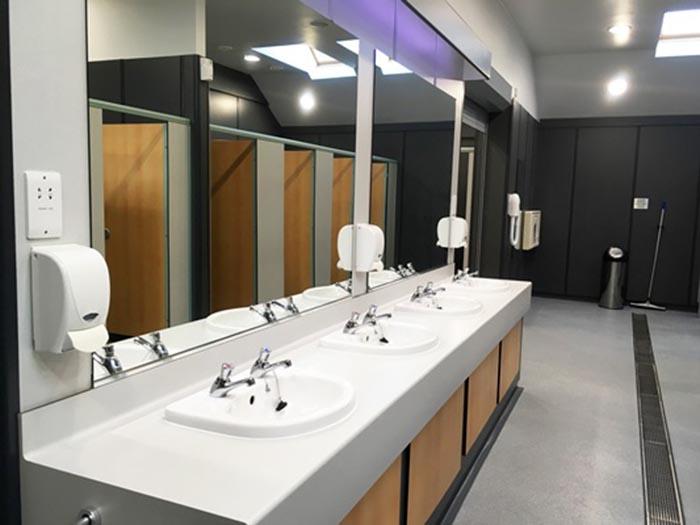Hotspots To Look For When Cleaning Restrooms
In numerous facilities, what passed for clean before the pandemic no longer holds up to public scrutiny — particularly when it comes to restrooms. As a result, many businesses are adding enhanced disinfection services to their cleaning contracts, including more frequent cleaning of high-touch surfaces. According to Ron Segura, president of Segura & Associates, Burlingame, California, restrooms warrant the extra attention. That’s due in part to the fact they harbor the most foot traffic and constitute the greatest area of contamination. “Pre-COVID, custodians probably spent about 15 to 20 minutes cleaning a restroom,” he says. “Now, some of the areas that seemed less important or weren’t cleaned every day are suddenly in the spotlight. What used to be incidental is something that we really need to concentrate on.” Indeed, as businesses reopen and return to full capacity, cleaning and disinfecting high-touch surfaces in restrooms has taken on greater significance. “People who were working remotely and are now going back to brick and mortar buildings are going to be looking at restrooms with a more interested eye,” says Darrel Hicks, author of Infection Prevention for Dummies and St. Louis-based infection control consultant. “They’re judging their safety through sanitation, so we need to increase the frequency of cleaning.”
Whether they’re attached to a door or a commode, handles are one of the most contaminated — and often overlooked — hot spots in a restroom. This makes handles one of the first points of emphasis when ramping up cleaning efforts. “The first thing we focus on in the restroom is wiping down and disinfecting those door handles — and it’s the last thing we do on the way out,” says Amanda Adams, regional vice president for 4M Building Solutions, St. Louis. “On average, our day porter will do this two to five times a day, depending on the size of the building.” In addition to wiping down door handles, janitors should pay extra attention to inside latches on stall doors — another often-neglected hot spot. “When custodians clean, they open the stall door and tend to hold it open so they don’t even see the latch,” says Hicks. “Instead, they need to go in and close the door so that they’re able to see what the customer sees.” Likewise, the stall door itself is a source of contagion frequently touched by patrons. “People don’t always use the latch to open the door, so hand prints are common on the inside as well as on the outside of the door,” notes Adams. “As a result, our custodians frequently wipe down those front and back surfaces.” Faucet handles, as well as soap and paper towel dispenser levers, also act as germ magnets. Fortunately, many businesses have migrated to touchless systems. For those that haven’t, these high-touch surfaces should be cleaned and disinfected several times a day, depending on the amount of restroom traffic. According to the American Cleaning Institute, Washington, D.C., some of the most unsanitary surfaces in the restroom include door handles, light switches, faucets and toilet seats. “When we go into a restroom, toilets are a huge focus for us,” says Adams. “We make sure we’re lifting up those toilet seats and disinfecting them every time we service the restroom.” Additionally, custodians should pay extra attention to surfaces that are in close proximity to the toilet, such as grab bars and toilet tissue dispensers. “People often use toilet tissue dispensers to lay their phones on,” notes Hicks. “Studies show that every time a toilet is flushed it causes aerosolization of fecal matter that can rise as much as five feet into the air.” As toilet plume particles fall, they sit on any and all surfaces within that stall space. This includes period product disposal containers. For that reason, these surfaces should be thoroughly cleaned and disinfected every time janitors clean restrooms. Period products are not offered in all restrooms, so those surfaces are often missed in cleaning specs. The same can be said for baby changing stations, yet these are another high-touch surface plagued with bacteria and germs. “With more and more mandates requiring baby changing stations in both women’s and men’s restrooms, there’s a great opportunity to miss them because they’re folded up,” says Hicks. “It’s easy to walk right by them and forget they’re there.” While baby changing stations are not used as frequently as other restroom amenities, Adams recommends treating them as if they are. “Custodians have to assume they’re being used and disinfect them every time they clean the restroom,” she says.
next page of this article:Floor Care Key To Hygienic RestroomsPOSTED ON: 6/23/2021 » Using this article on your site








